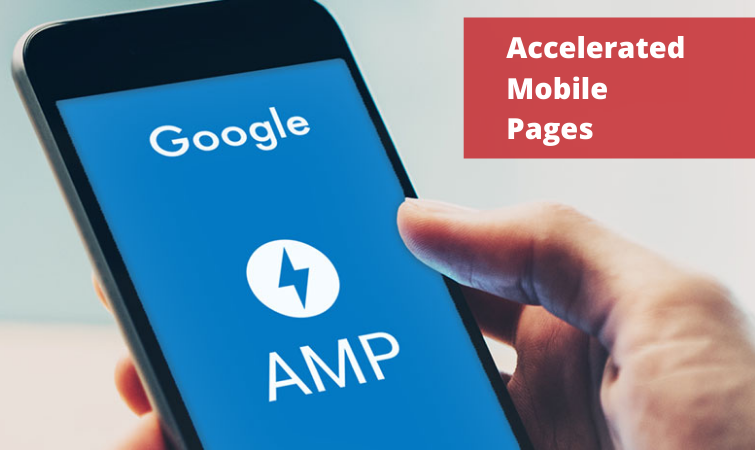AMP stands for Accelerated Mobile Pages and is designed to give mobile users a fast and engaging experience. According to a 2020 survey, everyday media consumption on mobile devices has increased by 504% since 2011. With more people accessing information via mobile devices, it’s more vital than ever to optimize for the mobile experience—not just for your readers, but also for you’re SEO.
Google may penalize pages that take a long time to load or have a high bounce rate by ranking them lower in search results. To avoid this you can approach the best SEO companies in Chennai and they will help you in mobile optimization using Google AMP.
However, whether Google AMP is the ideal tool for your business website depends on your industry, business size, business model, content strategy, and other factors. Whether or not Google AMP is suited for you, you’ll have the SEO information you need to feel confident about your site’s SEO and mobile performance after reading this piece.
What exactly is Google AMP?
Accelerated Mobile Pages, an open-source, web-based solution meant to revolutionize mobile content consumption, was launched by Google in 2016. It was a direct response to both Facebook’s in-app publishing platform and Apple’s news aggregation and discovery platform (iOS 9) at the time.
On mobile, the AMP version of a product page, blog post, or landing page is designed to load quickly. In the mobile SERP, it may also show differently or as a card. The AMP lightning bolt sign next to a result informs consumers that the page in question will load faster than non-AMP pages nearby.
Is AMP essential?
Before we get into the benefits and drawbacks of Google AMP, it’s important to remember that while it can help with SEO, it’s not always necessary, and the benefits are more applicable to some organizations than others. Next, we’ll go over the benefits and drawbacks of AMP, but first, let’s go over some essential facts that will help you understand AMP and how it applies to your business:
Publisher sites with a high amount of news stories or blog posts have embraced AMP. If the majority of your website’s pages aren’t articles, AMP might not be necessary for you.
If you already use a CDN (content delivery network) and publish a big volume of articles, these platforms generally provide performance optimization tools like image hosting, file caching, and lazy loading (which means the text loads first, before the images).
AMP pages are cleaner and easier for readers, however, this is typically due to the deprioritization or suppression of certain JavaScript functions and plugins. If you use third-party solutions for lead generation and audience tracking, ensure sure your AMP pages work and record information the same way your traditional sites do.
AMP is not a Google ranking factor in and of itself. It can help you enhance the characteristics of your web pages that are factored into Google’s algorithm, but it isn’t the only approach to improve the experience and speed of your site.
If your site already has a mobile version or mobile optimization methods in place (such as consolidated or minified CSS code), AMP may not be necessary, and it may even complicate performance and reporting.
While AMP can help with SEO, it is not required, and its advantages are more applicable to some firms than others. Optimizing for page speed and mobile experience is critical for SEO, and Google AMP is simply one method for doing so. Continue reading to learn more about how it works and whether it’s the appropriate fit for your company.
Benefits of Google AMP
Apart from faster loading times and a better user experience, AMP has several advantages for organizations with a content and SEO strategy:
Increased website interaction
Mobile users with a shaky internet connection will appreciate the lightweight AMP content. Furthermore, a faster page load time improves the user experience, increasing the likelihood of visitors staying on your site longer.
Increased traffic and ranking
AMPs are also prioritized in Google’s search algorithms, altering ranks, because the page load speed is a Google ranking criterion. In other words, if two sites are tied, the speedier site wins.
Visitors are more likely to stay on your site when your pages load faster. According to a Google study, if a mobile site takes longer than 23 seconds to load, 53% of visitors quit it. Additionally, publishers who use AMP could see a 2x boost in the amount of time spent on a page. Additionally, spending a longer time on your website can result in more conversions from your content.
Views of advertisements have increased
With AMP, the HTML is designed in such a way that banners and graphics are more usable overall. This leads to a greater ad viewability rate, which helps publishers monetize their content more effectively.
Higher rates of click-through
One of the main advantages of AMP is that it shows in the Google mobile SERP’s Top Stories list, which appears at the top of all search results. Readers are more inclined to choose those AMP pages first, resulting in higher click-through rates.
AMP statistics as of right now
While many well-known websites, like Yahoo, CNN, BBC, Reddit, Washington Post, WordPress, Gizmodo, Wired, Independent.co.uk, Pinterest, eBay, and others, use AMP technology today, it is not a technology reserved solely for large corporations. Over 1.4 million websites are using AMP technology. The data below indicates which industries make the most use of AMP:
- Nearly 11% of all AMP technology is used in the arts and entertainment industry.
- Computer Electronics & Technology makes for roughly 6% of the total.
- Science & Education is in second place with 5.88 %.
- Gaming accounts for around 5.15% of AMP usage.
- The remaining 73% is made up of minor percentages from every other industry.
Drawbacks of Google AMP
AMP can help you improve your site’s ranking as well as the experience and performance of your content for mobile readers. At the same time, there are some disadvantages and cautions to consider.
- To begin with, implementing AMP pages necessitates the removal of a large number of UX elements from your website. Because AMP HTML stresses efficiency over creativity, it may not be right for you if engaging visuals are a key part of your web experience.
- In addition to having a limited number of images on your AMP sites, you’ll be limited to only one advertisement per page. This restrictive structure also excludes disruptive commercials such as expendables, and direct-sold ads are difficult to deploy.
- From a marketing standpoint, it costs twice as much to crawl one piece of content, as part of Google’s push for parity. It has been discovered that it drives impressions but not necessarily engagement metrics for many sites. The Top Stories carousel, which encourages readers to read from various sources, is to blame for this.
- In a similar spirit, because a Google domain is displayed in the address bar, Google’s AMP viewer tends to diminish brand identity. While there is a workaround that displays the actual site on top of the AMP page, it takes up valuable real estate above the fold.
- AMP also only works if people visit the AMP version of a website (instead of the canonical version). While studies show that the AMP library can cut the number of server requests to obtain a document by as much as 77%, the AMP version isn’t always served if it’s not implemented appropriately.
- Even though AMP has been operating for four years, it is still in its infancy.
Here are a few more pieces of information regarding Google AMP to consider before selecting whether or not to use it on your site.
- You’ll need to utilize a streamlined CSS version.
- You’re only permitted to utilize the AMP-provided JavaScript library, and because you’re not in charge, you might get lazy loading (perhaps the only downside of AMP).
- If AMP sites are to work every time, they must be properly verified.
- Forms are not permitted on AMP plugin sites.
- For a better experience, custom fonts must be loaded separately.
- Image heights and widths must be declared.
- If you want video content on your pages, you’ll require AMP–approved extensions.
Finally, AMP favors readability and performance over share-ability. As a result, your social sharing buttons may not display properly because they were developed using JavaScript.

